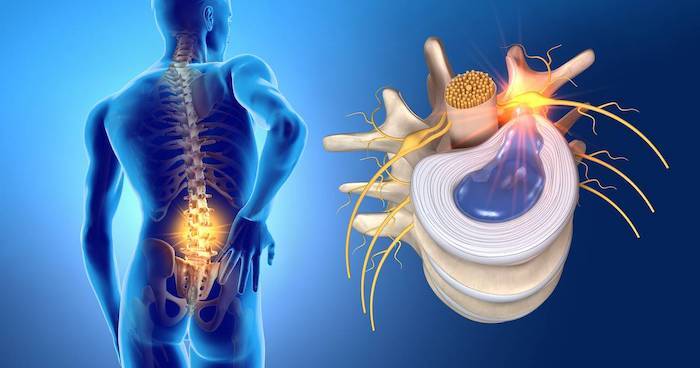
Your lower back and hip are codependent structures. A problem in one of these structures can cause dysfunction and pain in the other.
- If you have chronic lower back pain, the movements in your hip may be reduced and the muscles surrounding your hip joint can become tense and painful.
- If there’s an abnormality in your hip function, the mechanics of your lower back may be altered, causing pain in both regions.
The lower back and hip share many groups of muscles. When a specific muscle is affected, it may lead to compensatory movements, fatigue, and pain in the other surrounding muscles.
Read on to learn how lower back and hip pain can occur together. While some conditions may affect one side of your lower back and hip, others can cause pain on both sides at the same time.
Sharp Pain in The Lower Back and Hip on One Side
A shooting and sharp pain felt on one side of your lower back and hip may be caused by muscle spasm, joint dysfunction, and/or nerve compression in the region. Common conditions that cause this type of pain are discussed below.
Piriformis Syndrome
Spasm of the piriformis muscle located deep in the buttock may cause:
- Moderate to the severe lower back, hip, and buttock pain
- Referred pain that may extend into the back of the thigh
- Inability to sit for a long time
The pain is typically felt on one side and maybe worsened by hip movements, such as when getting out of bed.
Piriformis syndrome is commonly caused by the overactivity of the hip rotator muscles (which help rotate the hip inward or laterally) or sitting on hard surfaces for prolonged periods of time. An injury to the buttock may also cause this pain.
Sacroiliac Joint Dysfunction
Inflammation within the joint that connects your lower spine to your pelvis, the sacroiliac joint, can cause:
- Sharp, stabbing pain felt directly over the lower back, hip, and buttock
- Pain that may extend down the back of your thigh, but typically does not extend below the knee
Certain positions or activities may cause your pain to flare up, such as going from standing to sitting, climbing stairs, or lying on the affected side.
The sacroiliac joint may become a source of the lower back, hip, and buttock pain due to arthritis, trauma, or repetitive stress within the joint. This joint is also a common source of pain in pregnant women due to hormonal and bodily changes at the time.
While more common on one side, sacroiliac joint pain can also affect both sides of the lower back and hip.
The symptoms of piriformis syndrome and sacroiliac joint dysfunction may mimic lumbar radiculopathy, commonly called sciatica.
Pain And Stiffness in The Lower Back and Hip
A feeling of stiffness can accompany pain in the lower back and hip. This symptom is typically a protective mechanism of the body to prevent further injury in the area. Stiffness that occurs with pain can be debilitating and reduce function in the back, hip, and leg considerably. Here are a few common conditions that may cause these symptoms to occur together.
Strained Hamstrings
Tightness in your hamstrings due to a strain injury may alter the biomechanics of your spine.
Tight hamstrings are shorter in length and this change can affect the curvature of the lower part of your spine, disrupting the alignment of the lower back with your hip. A feeling of stiffness in your lower back with or without pain may be experienced.
The stiffness is usually more pronounced when you bend your spine forward. Some people also walk with stiff legs to avoid bending their hip and knee joints.
Osteoarthritis of the Hip
Age-related degeneration of the hip joint (hip osteoarthritis) can cause pain in the lower back and stiffness in the hip.
Hip osteoarthritis causes stiffness and a significant decrease in the hip’s range of motion. This change can cause the hip to incline forward, disrupting the curvature of the lower spine. The inward curvature (lordosis) of the lower spine may become more pronounced, sometimes causing the lower spinal discs to bulge or herniate.
This condition may over time cause degeneration of the spinal joints too, resulting in a more advanced problem called a hip-spine syndrome.
This list is not exhaustive of all possible causes of lower back and hip pain. If you experience pain and/or stiffness in your lower back and hip that does not resolve with self-care and affects your daily activities, talk to your doctor. A doctor can accurately diagnose the cause of your lower back problem and formulate a treatment plan for the underlying condition.
Precision Pain Care and Rehabilitation has two convenient locations in Richmond Hill – Queens and New Hyde Park – Long Island. Call the Richmond Hill office at (718) 215-1888, or (516) 419-4480 for the Long Island office, to arrange an appointment with our Interventional Pain Management Specialist, Dr. Jeffrey Chacko.













